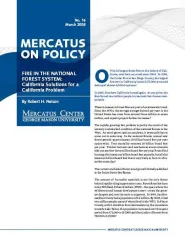Before expanding the state's pension portfolio, first consider the reason CalPERS faces an half trillion shortfall.
At least that is the proposal being put forward by a few California Democrats in response to Governor Jerry Brown's proposed pension reforms (discussed here by Troy Senik). Senate Bill 1234 proposed by Los Angeles Senator Kevin de Leon, "would require businesses with five or more employees to enroll them in a new 'Personal Pension' defined benefit program."
The proposal is based on the worry that millions of Californians face retirement without Social Security and thus require some type of defined benefit in retirement. While annuities are a good thing should California be in charge of managing one?
Democratic Assemblyman Warren Furutani asserts CalPERS reformers have "pension envy." He thinks the Governor's reforms are a misguided attempt to spread around the insecurity of private sector retirement plans in the name of fairness.
Before expanding the state's pension portfolio, first consider the reason CalPERS faces an half trillion shortfall. It is because they have chosen to value the promised benefits as though they were risky investments, instead of safe, government-guaranteed payments. Currently the system assumes a discount rate of 7.75 percent. This has led the system to expose plan assets to large amounts of risk in the marketplace to meet this expected return. Indeed, this faulty accounting is what led California to make the plans more generous (i.e. costly) back in 1999 with retroactive benefit increases. If instead the systems were valued as risk-free investments legislators would have been working with accurate numbers and not wild-eyed expectations of market windfalls. Actuaries would have recommended more money be set aside to fund benefits and plan managers would not have exposed the plan to increasing amounts of market volatility (e.g Peter Cooper Village/Stuyvesant Town) setting up the system for a massive crash in 2008.
DeLeon proposes automatic enrollment for seven million private sector workers who would contribute 3 percent of their income to an investment pool managed by a new entity, the Golden State Retirement Savings Investment Board. He cautions the fund would be managed conservatively and only invested in bonds. That is at least an acknowledgement that CalPERS' portfolio doesn't reflect the safety promised by a guaranteed pension. Could it work? I have a few questions: How will the liabilities be valued? And who guarantees the plan in the event the board makes poor choices?
